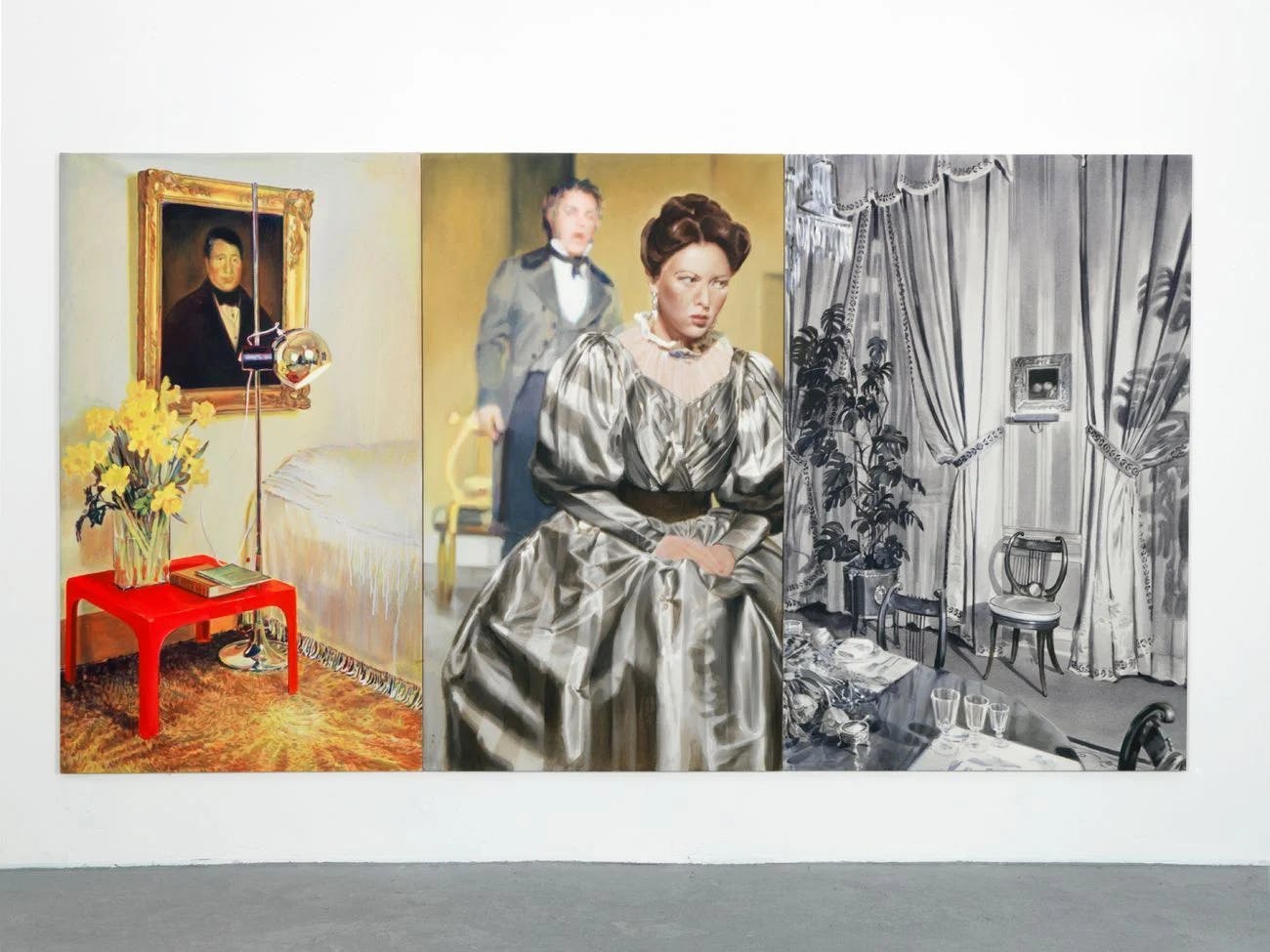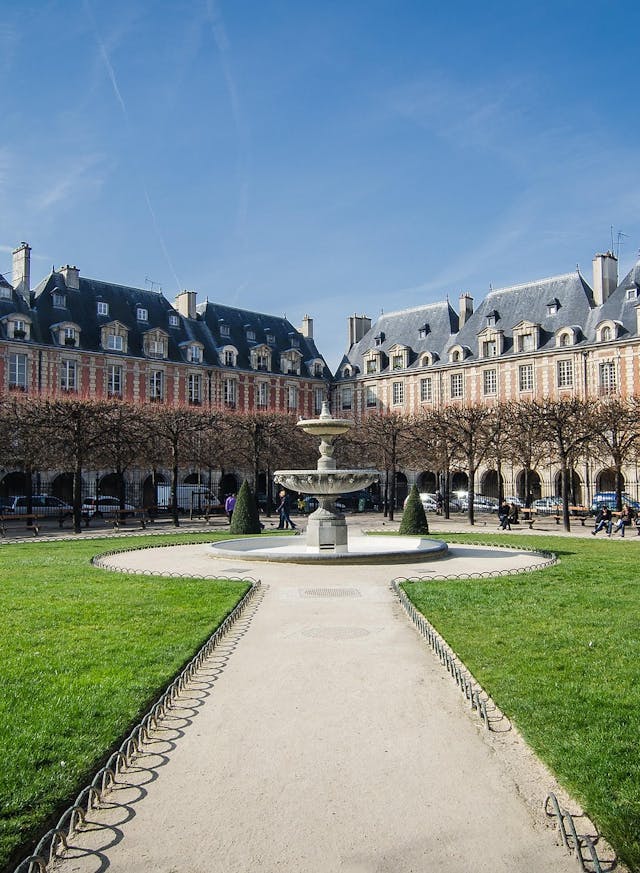
Art
Nina Childress, blossoming eternal
Painting as a calling; images as self-evident. And yet through her creative journey, Nina Childress has revealed everything that “making a painting” truly implies in terms of exploration, arbitration, acceptance, and motivation. Introducing one of the first two female painters ever appointed to the Académie des Beaux-Arts in France.
Interview

For as long as you can remember, have you always been drawn to working in the art world? During my childhood, I was surrounded by painters on my grandparents’ side. During the same period, while we were living in New York City, my parents, who are not artists themselves, formed relationships with figures such as Jeanne-Claude and Christo. My father, a mathematician, worked with Christo on one of his installations. That being said, I originally studied science before attending the Ecole Nationale Supérieure des Arts Décoratifs and then the Beaux-Arts. Within a very short space of time, drawing and then painting became my means of expression… I suppose I was like many young people at that age, although I was particularly obstinate!
As an artist, how has your work developed and changed over the years?
Every painter has their own recipes, their own know how, their own way of the creating a painting. There is technique, but also the subject, and of course the specific way of approaching it. Absolutely everything that characterizes a work of art is the result of a series of choices that transform over time. That is why we often refer to periods or eras when talking about painters. In terms of technique, I have explored extensively and developed a fascination for modern pigments. They are not easily tamed, but I love the challenge! I have slowly incorporated fluorescent colors into my work, and especially phosphorescent pigments that store light and reveal the work in the dark. The interaction created with the public, who play an active role in the experience, is very interesting.
Speaking of subjects, your paintings are also a testament to this process of change. Could you tell us more?
Absolutely! The late 1980s were defined by a rejection of narrative painting in favor of abstract and conceptual painting. With that in mind, I initially banished humans from my paintings. One day, I happened to be painting hair, which I found fascinating, and I then allowed myself to change my choice of subjects. I focused mainly on women, whom I found more interesting in terms of bodies, clothes, and hairstyles. I later started painting famous people, which requires very precise work on the faces to achieve true resemblance.
You talk about how your work has evolved as though it were a form of self-liberation, a process of bringing forth some personal truth. Is that the case?
Upcoming Exhibitions Solo: Glowing Heads, L’Alliance, New York, from September 3, 2024, to January 5, 2025. Group (selection): Future is now, Le Parvis, Tarbes, until October 5, 2024. Beaubadugly, une autre histoire de la peinture, MIAM, Sète, until March 10, 2025. Curators: Hervé Di Rosa, Jean–Baptiste Carobolante, Nina Childress, Colette Barbier. La haute note jaune, Fondation Vincent Van Gogh, Arles, from October 3, 2024, to March 30, 2025. Curator: Bice Curiger It is, and many stages in this process were about giving myself permission to do things, before actually exploring a given area. When you are a young artist, you think you have to find a style, a signature, to be easily identifiable. So I started working on series, blurring, and then objects. Over time, as you mature, you abandon this search, you feel liberated from it. You get the feeling that what you are doing reflects you, and that is wonderful. This has even become something of a moral stance for me, avoiding mass production and anything that exists within a commercial mindset. Simultaneously – and paradoxically – I am becoming more demanding about my work in a perpetual process of self-criticism. That is what is so wonderful about painting; it is never really f inished.
You were appointed to the Académie des Beaux-Arts and appointed Chevalier de la Légion d’Honneur. What does this recognition mean to you?
I am very surprised. Receiving these institutional honors was quite unexpected. Tania Mouraud and I are the f irst female painters to be appointed to the Académie, so I have accepted this role to show young women that anyone can do it.
But will this idea of exemplarity not lead you back to a form of artistic self-censorship?
Certainly not! I intend to share my wild ideas and introduce a few new things through the Académie’s grants and prizes. I think I will particularly focus on less conventional, less “academic” projects, for example
Where to find Nina Childress?
- Glowing Heads, L'Alliance, New York, from September 3, 2024, to January 5, 2025
- Future is Now, Le Parvis, Tarbes, until October 5, 2024
- Beaubadugly, Another Story of Painting, MIAM, Sète, until March 10, 2025. Curators: Hervé Di Rosa, Jean-Baptiste Carobolante, Nina Childress, Colette Barbier
- The High Yellow Note, Vincent Van Gogh Foundation, Arles, from October 3, 2024, to March 30, 2025. Curator: Bice Curiger
Triptyque Onéguine, 2006, huile sur toile, 195 x 374 cm, collection FRAC Nouvelle Aquitaine MÉCA © Nina Childress, adagp 2024, photo: Philippe Chancel
Published on 25/09/2024






